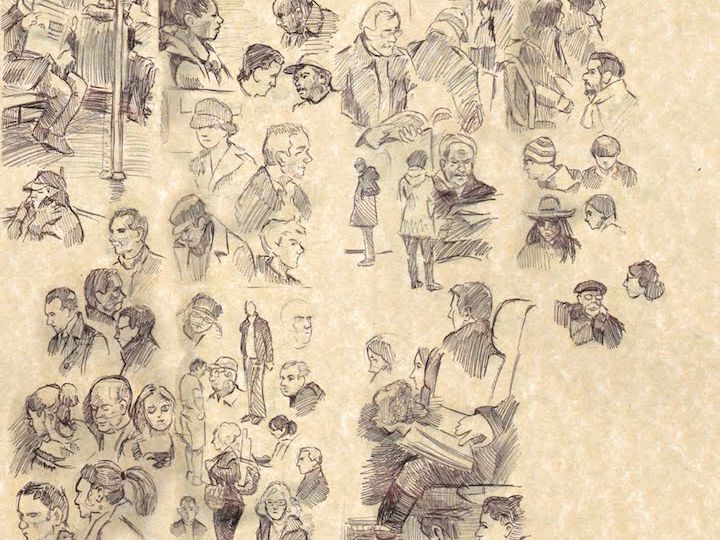
“The increasing tendency towards seeing people in terms of one dominant ‘identity’ is not only an imposition of an external and arbitrary priority, but also the denial of an important liberty of a person who can decide on their respective loyalties to different groups (to all of which he or she belongs).”
― Amartya Sen, The Idea Of Justice
I sit on a chair in front of my laptop, typing away. I am attempting to write about the boundaries of my mind, which are closely linked to the boundaries created by my culture, my world and everything in between. It is a disconcerting thought – to think that my mind has boundaries. I would like my mind to be an open field, with no lines that limit or keep me from the world that exists out there. But, unfortunately, these lines do exist. Fortunately, the lines remind me of the possibilities that lie beyond. They challenge me to step on them, jump over, break through, or push them further away. But the lines that keep us within also define us.
I was a shy kid, coming into my element only at home with my sister. I didn’t like being at social gatherings; large groups of peers or family made me go back into my shell. I never thought this would change, but like everything else, it did. I was surprised to find myself becoming a very sociable young adult, creatively inclined, and the life of any party. I thrived on meeting new people and learning about their lives. This sudden knack for making friends, I realised, had developed due to my interest in people who were different from me. I enjoyed being reminded of the limitations of my life experiences, and the opportunity to go beyond. I was keen to step outside my comfort zone and see the world from points of view other than my own.
I was aware of the identities that I had been born with and those given to me by my family and upbringing, but somehow I never felt like I belonged to any of them. I was a woman, while constantly trying to prove that I could be as good as a man. I was a Hindu, while constantly struggling to dissociate myself from a religion that had been scarred by sectarianism and bloodshed. I was an Indian, with an innate dislike of the ideas of patriotism, xenophobia, or blind loyalty to any group as a whole.
It was around this time that I read Amartya Sen’s writings and it opened up my mind to the person I was, and the person that I could be. I realised that I was so much more than a North Indian Hindu woman, and that I was free to choose my own identities. I was a student of Political Science, a cricket fan, a reader of books, a photographer, an early riser, a meat lover, a daydreamer, a procrastinator, and so much more! Suddenly I became a multi-dimensional, living, breathing specimen who I could identify with. I felt more in control of my life as I acquired a new definition of myself.
This new perspective helped me break many barriers, not just within, but also with others. I now saw that my eagerness to meet new people may have been based on my curiosity to learn about their lives, but the starting point for all these conversations had to be a common identity. All this while, I had been doing it subconsciously – finding common ground and then flying off in whichever direction we pleased. Now, it became an interesting exercise, a playful one, to see how solid or fleeting ways of defining ourselves could come into play in our social interactions.
Apart from this one revelation, a lot of reading and traveling to new places contributed to this process. With every new book or interaction, my frame of reference widened. With every new destination, I connected lines between countries and continents. A young Croatian woman and I connected because both of us believed that our respective nephews were the cutest children in the whole universe. A middle-aged man, a porter in a fancy New York City building, and I bonded because we were both immigrants struggling to survive in the same city. A Chinese woman and I, despite our political differences, became friends because we were both terribly homesick.
Increasingly, I began to notice multiple interconnected networks of people, built on various factors. At times it was a shared history or a shared geographical region that brought people together; at other times it was a love for food, art, sports, cigars, even reality TV shows or Zombie movies that became the attracting, pulling force. Now, one could even skip the organic discovery of common interests through the old-fashioned ‘conversation’, and instead use apps built on complicated algorithms that do the job for you.
Sen writes that we are all a function of our own choices. These choices, just like our identities, are constantly shifting. Today, as I write this piece for In Plainspeak, I draw from my experiences of being a human being connecting with fellow humans. I have made an active choice to keep my identity as a woman aside because I find that looking through that lens alone narrows my vision. The thought that I can choose my lenses is empowering. I am not just this or that. I am whoever I want to be, all at once, and limitless.
Cover illustration by Jeff Porter